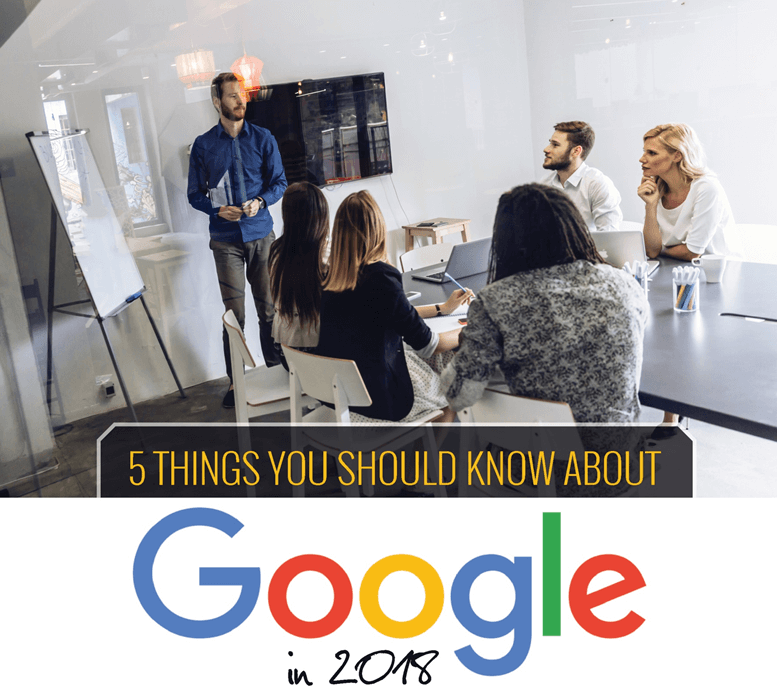
If people can’t find your website, they’re not going to buy from you.
Sounds simple, right? It’s internet marketing 101. You can’t expect people to purchase your products or try your services if you’re essentially invisible to them.
Google is the world’s top search engine. They also own YouTube, which is the second-largest search engine. That means that getting a high rank on Google can make or break your business.
So, all you need to do is focus on the things that are most important to Google and you’ll be home-free.
Except…
Google’s algorithm is proprietary. That means we don’t know exactly how Google determines rank. They’ve shared some of the bits and pieces but not the entire picture. Marketing & SEO pro’s make a living reading between the lines connecting the dots to help their clients get the highest rank possible.
Here are the 5 things you need to know to improve your site’s rank and rise to the top (or as close as possible) on Google’s SERP.

If people can’t find your website, they’re not going to buy from you.
Sounds simple, right? It’s internet marketing 101. You can’t expect people to purchase your products or try your services if you’re essentially invisible to them.
Google is the world’s top search engine. They also own YouTube, which is the second-largest search engine. That means that getting a high rank on Google can make or break your business.
So, all you need to do is focus on the things that are most important to Google and you’ll be home-free.
Except…
Google’s algorithm is proprietary. That means we don’t know exactly how Google determines rank. They’ve shared some of the bits and pieces but not the entire picture. Marketing & SEO pro’s make a living reading between the lines connecting the dots to help their clients get the highest rank possible.
Here are the 5 things you need to know to improve your site’s rank and rise to the top (or as close as possible) on Google’s SERP.

The next most important ranking factor is your content. Google’s aim is to provide highly relevant, quality content to searchers. The better your content is, the more likely it is that your site will rise to the top of the SERP.
Not all quality is created equal. You can signal quality to Google by doing the following things:
- Use keywords properly. Keyword stuffing won’t help you, but using keywords in your URL, title tag, H1/H2 tags, alt tags, and in the first paragraph of your content will.
- Make your content long enough to be satisfying. There’s no specific word count to aim for. Instead, your goal should be providing visitors to your site with the information they’re looking for. If you do that, they’ll be satisfied – and your rank will reflect it.
- Make your content comprehensible. By that, we don’t mean making sure people can read it. Rather, it has to do with providing context for your content. The use of Latent Semantic Indexing (LSI) words can help. In other words, remember that your content doesn’t exist in a vacuum.
To earn a high rank on Google, your content must be relevant and engaging. If people who find your site through Google are happy with your content, they’ll show it by staying on your page and engaging with your content. Their behavior in relation to your content – combined with the other content factors here – will tell Google what it needs to know about your site.


The next thing to consider is whether your site is mobile-friendly. As of 2017, more than half of all Google searches were conducted on mobile devices. That’s not something you can ignore.
If you’ve been paying any attention to developments at Google, you know that their Mobilegeddon update in 2015 penalized sites that weren’t mobile friendly. As of 2018, not being mobile friendly will have a negative impact on your Google rank.
Mobile users expect the sites they visit to be easy to use – whether they’re accessing them on a smartphone or a tablet. They’re not going to frequent your site if:
- They must wait too long for it to load
- The buttons are too small for them to use properly
- They must scroll horizontally to read your content
- They can’t access the same content they can on a computer
The takeaway here is that mobile users matter, and your site should reflect that.


Web users are notoriously impatient. People who visit your site will expect it load quickly. If it doesn’t, they’ll find another site, instead.
Since “quickly” is a relative word, let’s talk about what it means. One study found that 47% of web users expect a site to load in two seconds. Of those, 40% will navigate away if the site takes longer than that to load.
You can test your site’s speed with Google’s Page Speed Insights tool. If it’s too slow to load, you’ll need to address the situation. Some things that may affect your loading speed are:
- Poorly optimized images
- No Content Delivery Network (CDN)
- No caching plugin (WP Rocket is an example)
Minimizing your site’s loading speed will ensure that mobile users won’t navigate away from your site out of frustration.


You probably know that, as of 2017, Google is penalizing sites that aren’t secure. That means that if you aren’t already using HTTPS, you should be.
HTTPS provides a secure user experience for your site. Sites that use HTTPS display a webicon of a lock. Those that aren’t secure get a message stating that the site isn’t secure, instead.
Switching to HTTPS requires buying a security certificate, installing it, and rerouting traffic from your HTTP site to the new HTTPS site. Once you do, your site will display the lock icon and you may get a boost in your Google rank, too.
Google’s Algorithm is Proprietary…
But that doesn’t mean that you can’t take steps to improve your site’s rank. The five ranking factors listed here are key to moving up the SERP – and getting the search traffic you deserve.
